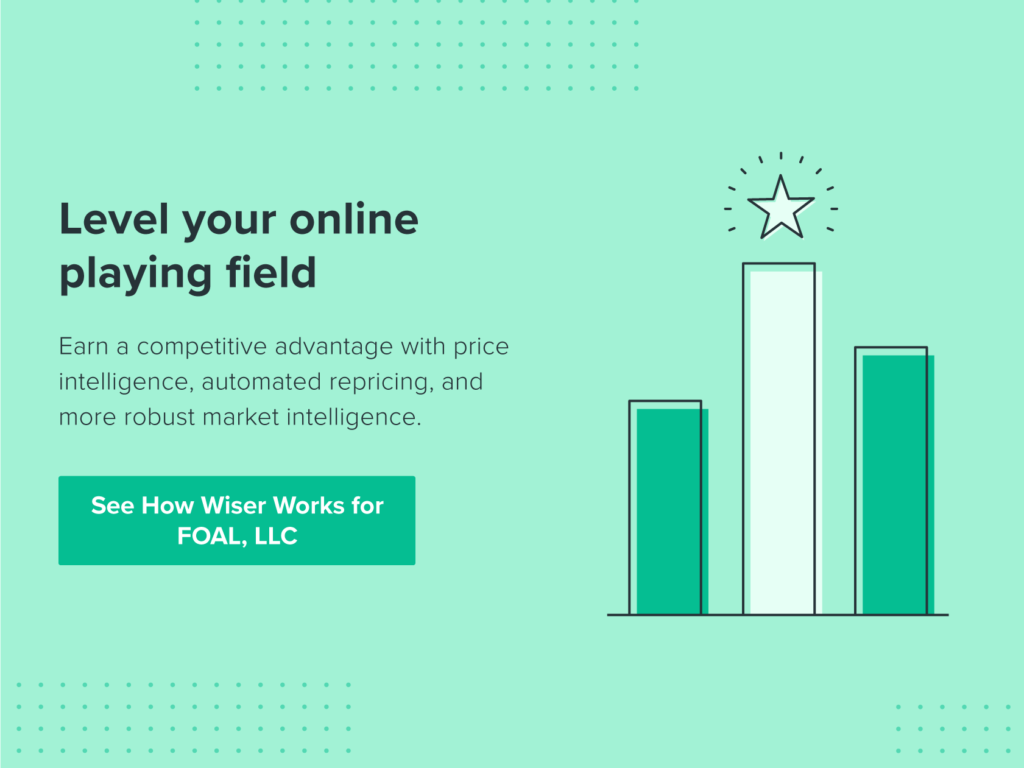The world of pricing can be a little complicated. Not only do you have to manage a long list of products, but you have to compete with the Amazons and Walmarts of the world. You have to satisfy demanding customers who expect the best price at all times and be agile enough to change your prices on the fly if the market requires it.
As a result, a massive industry of pricing-related tools has emerged. You don’t have to rely on your spreadsheets and your gut if you don’t want to. But how do you know which pricing tool is right for you? Keep reading to learn about a few different types of tools on the market—and what each one can do for you.
Gathering Pricing Intelligence
The first set of pricing tools can be bucketed into the category of “gathering intelligence.” Not surprisingly, these tools are all focused on capturing some pricing-related data from the web.
Price Scraper
You might have heard the word “scraping” pop up in various conversations, especially around data and the internet. Scraping is the process of extracting data from different websites using a bot or crawler. Scrapers search these sites at scale and capture whatever information is requested of them.
For the purpose of our conversation, that’s often prices. A price scraper is looking for the cost of goods only, often scanning eCommerce sites and similar platforms for listed prices. The pros and cons of scraping relate to its efficiency—many websites take steps to block scrapers from gathering the data. This means the most effective tools are the ones that can access the most relevant information.
On a related note, scrapers tend to be very focused in nature. The bots have a goal—extract prices of X products from Y websites. Your needs might be more expansive than that, requiring other information or more robust recommendations and strategies. Those are all important considerations if you’re in the market for a price scraper.
You might have also heard of our next pricing tool, which brings us to:
Price Crawler
Price crawlers. Like we mentioned above, scraping the web involves the use of a bot or crawler. This is why you might talk about extracting prices using either a scraper or a crawler. In reality, the two are very similar (or exactly similar, depending on which vendor you’re talking to).
Other synonyms for crawlers and scrapers include spiders and spiderbots. These processes typically work by asking you to share a list of desired websites and products, then the tool kicks into action to crawl those sites for those products. They capture the prices and the output is often a basic readable format like a CSV export. The focus is on capturing as much data as possible as quickly as possible.
You can find a pricing tool that fits your unique business challenges. You don’t have to rely on your spreadsheets and your gut if you don’t want to.
Price Intelligence
Moving up a level is price intelligence. Price intelligence includes many of the features of a price scraping or crawling tool—there’s the extraction of prices from various websites for a selected assortment of products. Where it differs is in the level of features and functionality on offer.
For example, Wiser’s Price Intelligence software provides easy access to marketplace prices, of course. It includes features that let you view your own historical prices and prices across your competitors’ catalogs. There are also heatmaps, dashboards, and more business intelligence to make it easy to visualize trends, share insights, and make decisions.
This is a core reason why scraping and intelligence are different. Intelligence really puts the emphasis on “intelligence.” You should have more visualizations and actionable insights present compared to scraping. A web scraper, on the other hand, emphasizes speed and simplicity. You’ll get raw data at scale, but likely without any business intelligence layered on top.
We’ve gone into more detail about the difference between price crawling and price intelligence if you’re interested in reading more.
Taking Pricing Action
The second set of pricing tools are all about actionability—specifically, how you can take the pricing data you captured and turn it into pricing strategies or price recommendations.
Pricing Engine
One broad term for turning price intelligence into actionable recommendations is “pricing engine.” A pricing engine is just that—a tool that takes an input, like prices, and delivers an output, such as a recommended new price or a larger pricing strategy.
At the heart of a pricing engine is the desire to simplify your pricing workflows. Most pricing analysts, category managers, and similar professionals do their pricing by hand. They have Excel sheets and various workbooks to track products, competitors, market conditions, and more. Then, they manually calculate new prices and begin the time-intensive process of repricing.
Pricing engines are designed to replace much of that manual workflow with automation. They also go beyond simply decreasing prices. They can match prices of similar products, make changes based on competitor behavior, and take into account other market conditions and assortment trends to calculate ideal prices.
Dynamic Pricing
One specific example of a pricing engine at work is dynamic pricing. The first time you heard of dynamic pricing was likely in the context of airlines. Airlines were at the cutting edge of adjusting prices based on market demands. Buying a plane ticket the day before Christmas is going to cost you a lot more than if you bought that same ticket six months earlier. This creates a situation where two people sitting next to each other paid drastically different prices for the same service.
Dynamic pricing is also prominent for sporting events, as cost increases alongside demand. World Series tickets for baseball cost more than a regular-season game, even though the “product” could be reasonably described as quite similar.
However, dynamic pricing is used in other industries as well, including retail. At its core, it’s about continually adjusting prices to capitalize on market conditions. The goal is to optimize prices for the biggest margins at all times or leverage consumer demand to drive up sales.
How can you take the pricing data you captured and turn it into pricing strategies or price recommendations?
Price Optimization
What about price optimization, then? Price optimization takes elements of dynamic pricing but adds in more features and functionality.
For example, Wiser’s Price Optimization software includes a pricing engine, so you could price dynamically if that fits your strategy. However, it also has a strategy builder so you can build and manage complex pricing strategies from within the platform (say goodbye to Excel). You can prioritize strategies as well, so you can order different prices based on criteria. There’s a live preview so you can see the potential impact of the pricing changes on your products and your business, and an inspector if you want to understand why a price was recommended in the first place.
As you can see, price optimization should be a level up from dynamic pricing or a simple pricing engine. It incorporates features of those, and can also bring in the intelligence side of it with price crawling, but it needs to take a holistic look at your company’s pricing practices. It has to be smart enough to ingest different data sets and calculate effective, profitable pricing recommendations. Finally, it must be easy to use so that it’s a better alternative to your manual workflows.
No Matter What You Call It, Pricing Has To Work For You
The big takeaway is that you can find a pricing tool that fits your unique needs. If you value simplicity, scale, and speed, perhaps you want a crawler or scraper. If you just need holistic market intelligence and awareness, then price intelligence might be for you.
On the flip side, you’ll want to look for a pricing engine if dynamic pricing or price optimization is what you need. This is the actionability side of the coin. No matter what you end up choosing (or calling it), get a pricing tool that serves your business needs.
Ask yourself:
- How big is my assortment?
- How many SKUs, stores, catalogs, etc. do I need to track and manage?
- Do I need information or do I need to change prices as well?
- How often do I want pricing data or to be able to change prices?
- Do I want competitor data alongside my own SKUs?
Running through this checklist will help you get closer to an answer of which tool is right for you. If you still have questions, we’d love to chat about your challenges and what types of solutions are best suited to your business.
Happy pricing!















